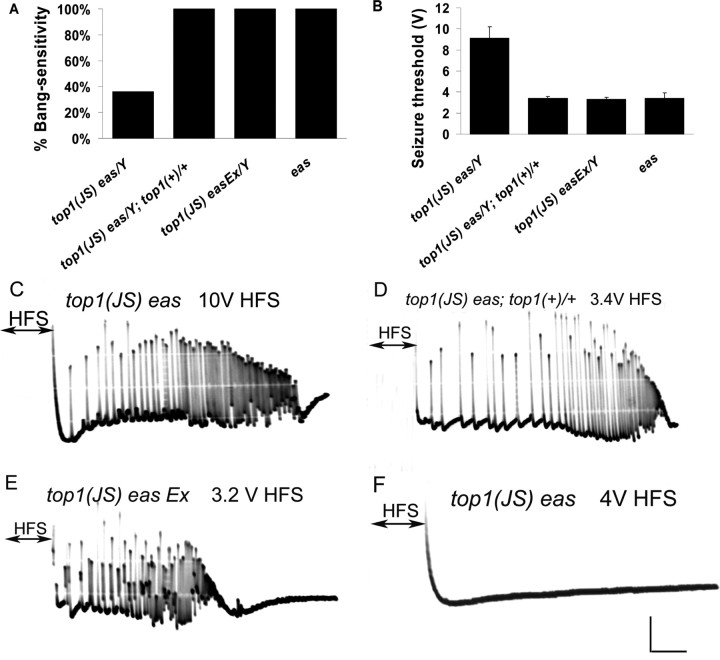Figure 3.
Behavioral and electrophysiological evidences that top1JS causes seizure suppression. A, Behavioral evidence that seizure suppression is caused by top1JS. The top1 rescue construct (top1+) used here is P {top1 ± 10}, which contains the entire top1 transcribed region and no other complete genes. In the presence of top1+, top1JS eas double mutants show 100% bang sensitivity, which is the same as eas mutants (100% BS; p < 0.01), suggesting the rescue of the seizure suppression phenotype. The top1JS easEx is a precise excision line in which the P element is precisely removed, and the behavioral phenotypes of those flies get reverted to 100% bang sensitivity (p < 0.01). B, Electrophysiological evidence that seizure suppression is caused by top1JS. Seizure thresholds are consistent with the behavioral phenotypes: both rescue and excision lines have decreased seizure thresholds, similar to the eas mutant (p < 0.01). C, A representative seizure in a top1JS eas fly recorded from the DLM after a high-frequency brain stimulus (HFS) of 10 V. The DLM shows aberrant high-frequency firing during the seizure phase. D, A seizure is elicited in a top1JS eas; top1(+)/+ fly after a 3.4 V HFS. E, A seizure is elicited in a top1JS easEx fly after a 3.2 V HFS. F, Failure to elicit seizure in a top1JS eas double-mutant fly after a 3.4 V HFS. Calibration: 10 mV, 200 ms. For each genotype, n ≥ 80 flies tested for behavior; n ≥ 8 flies tested for electrophysiology.

